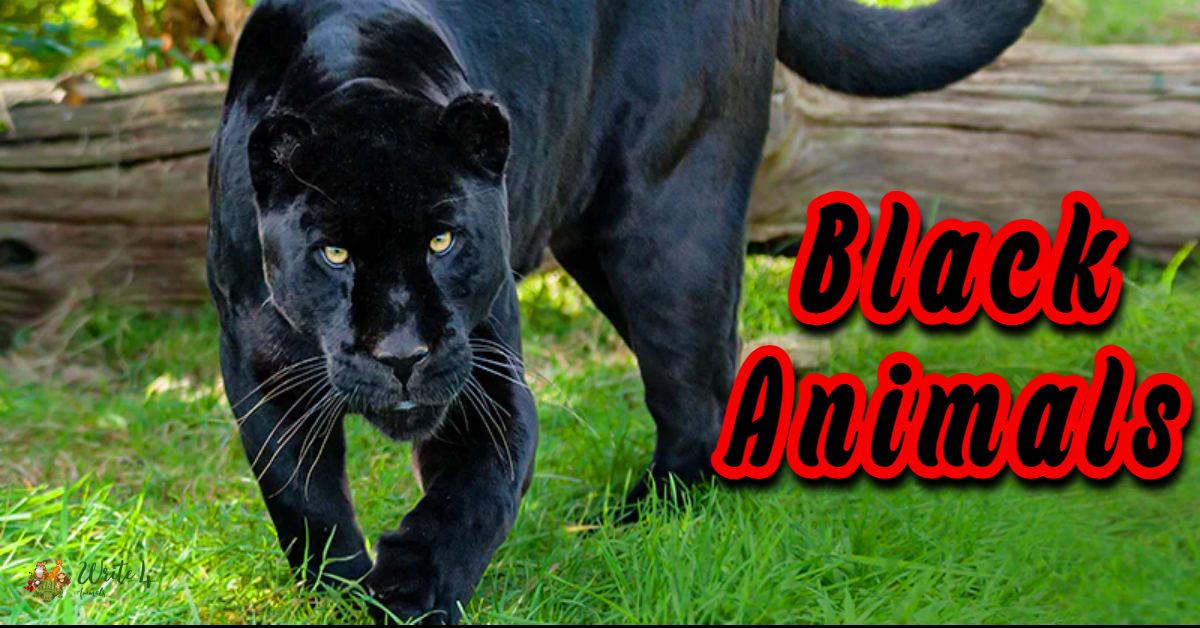Nature, in all its diversity, has gifted the world with a stunning array of creatures, each uniquely adapted to its environment. While vibrant colors often steal the spotlight, there’s an undeniable allure in the mysterious beauty of black animals. These creatures, draped in darkness, exude a sense of elegance and enigma that captivates the imagination.
In this blog post, we embark on a fascinating journey to explore 15 black animals from different corners of the globe, showcasing the diverse and awe-inspiring world of these melanistic wonders.
15 black animals in the world
1. Black Panther
The Black Panther, a mystical feline of the wild, is not a distinct species but a melanistic variant of leopards and jaguars. Inhabiting the dense jungles of Africa and Southeast Asia, these big cats possess an awe-inspiring allure with their sleek, jet-black fur.
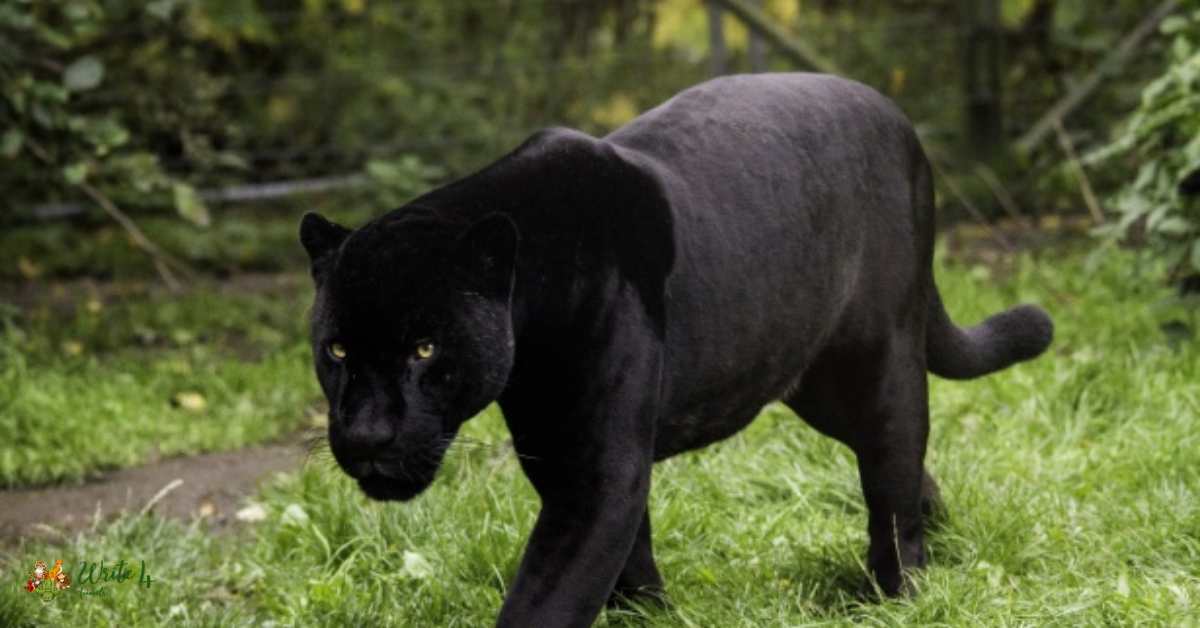
The term “panther” encompasses their powerful and stealthy nature, showcasing a symbiosis of strength and elegance. This adaptation, known as melanism, provides them with a unique advantage in their nocturnal hunting endeavors.
A silhouette of grace against the lush green backdrop, the black panther embodies the enigmatic beauty of the natural world, evoking a sense of reverence for the untamed and mysterious.
2. Black Jaguar
Venturing into the heart of the rainforests of the Americas, the black jaguar emerges as a captivating manifestation of melanism within the jaguar species. These majestic big cats, with their glossy black coats adorned with rosettes that subtly reveal themselves in the right light, epitomize the enigmatic allure of the color black in the wild.
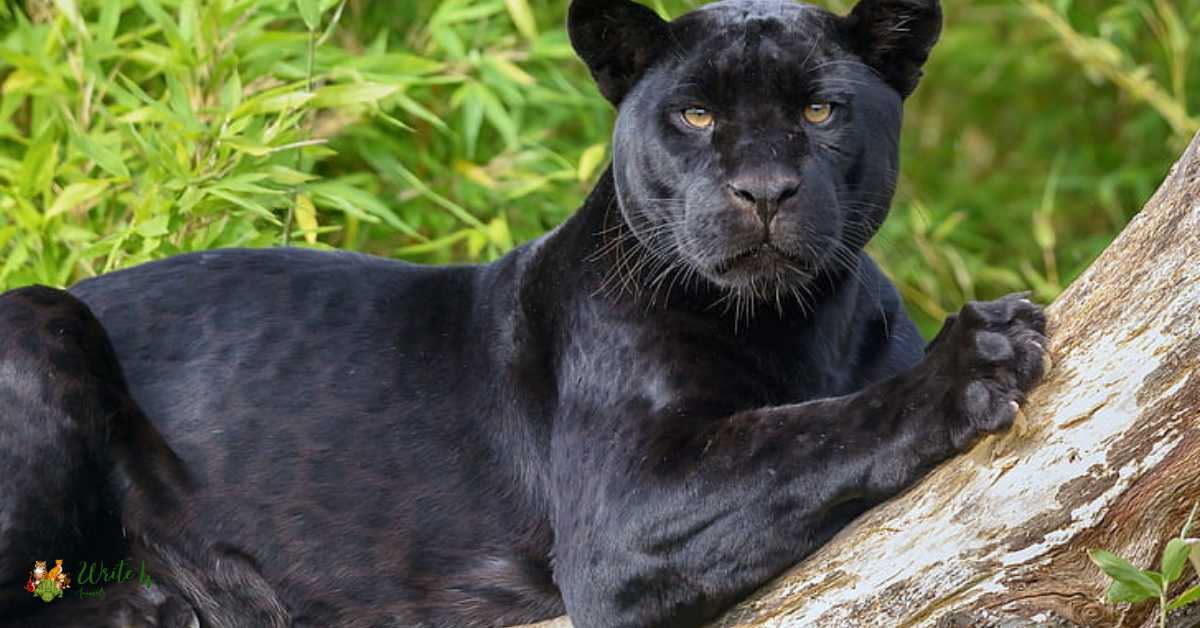
A symbol of strength and stealth, the black jaguar effortlessly weaves through the shadows of its lush habitat, embodying a mystique that transcends the ordinary.
Despite their formidable presence, this black animal also symbolize the fragility of their ecosystems, making their preservation crucial for maintaining the delicate balance of the natural world.
3. Black Rhino
In the vast African savannas, the black rhinoceros stands as an ancient sentinel, clad in thick, dark armor that speaks of resilience in the face of adversity. The term “black” refers not to the color of their skin, but to the formidable nature that shrouds these magnificent creatures.
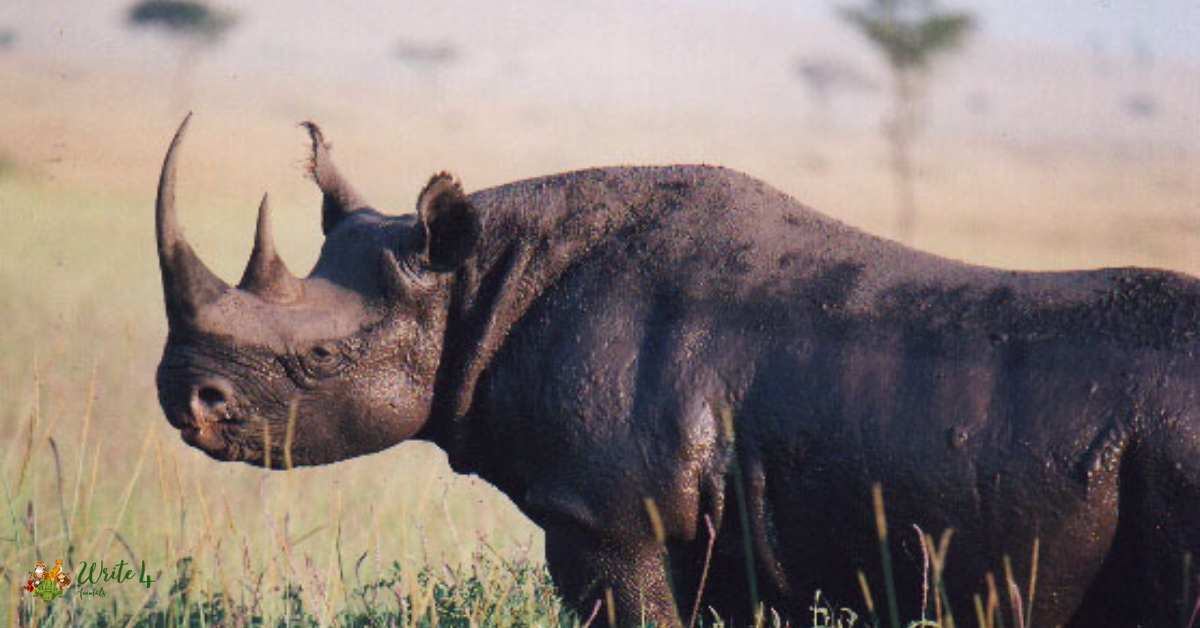
Endowed with two formidable horns and a seemingly impenetrable exterior, this black animal navigate their shrinking habitats with an air of quiet strength. Tragically, they face severe threats from poaching and habitat loss, underscoring the urgency of conservation efforts.
The black rhino serves as a poignant reminder of the delicate interplay between human activities and the survival of Earth’s most iconic and majestic creatures.
4. Black Mamba
Slithering through the dense foliage of sub-Saharan Africa, the Black Mamba commands both fear and fascination as one of the most venomous snakes on the continent. Its glossy, jet-black scales contribute to its ominous reputation, earning it the moniker of “black” mamba.
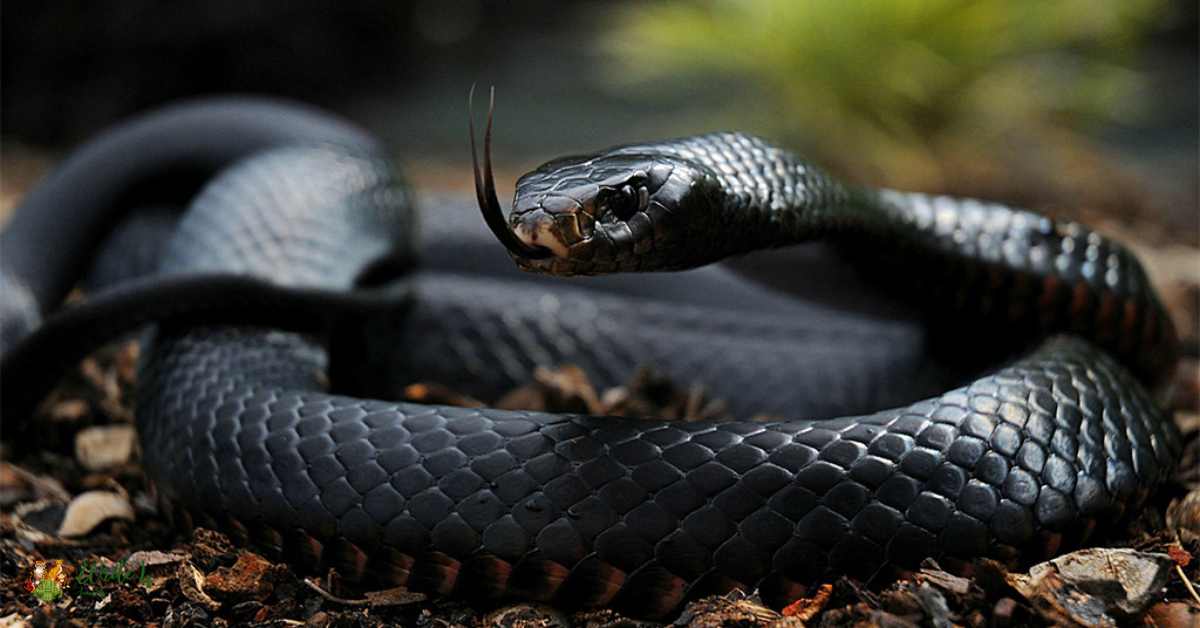
Agile and lightning-fast, these serpents navigate their territories with an almost spectral grace, instilling a primal fear in those who encounter them. Despite their ominous reputation, black mambas are crucial for ecosystem balance, preying on rodents and contributing to the intricate web of life in their habitats.
The black mamba serves as a symbol of the delicate equilibrium within ecosystems, urging us to understand and appreciate the often-misunderstood role of these enigmatic creatures in the intricate dance of nature.
5. Black Widow Spider
Weaving intricate silk tapestries in the corners of our homes and gardens, the Black Widow Spider stands as a testament to the delicate balance of nature’s design.
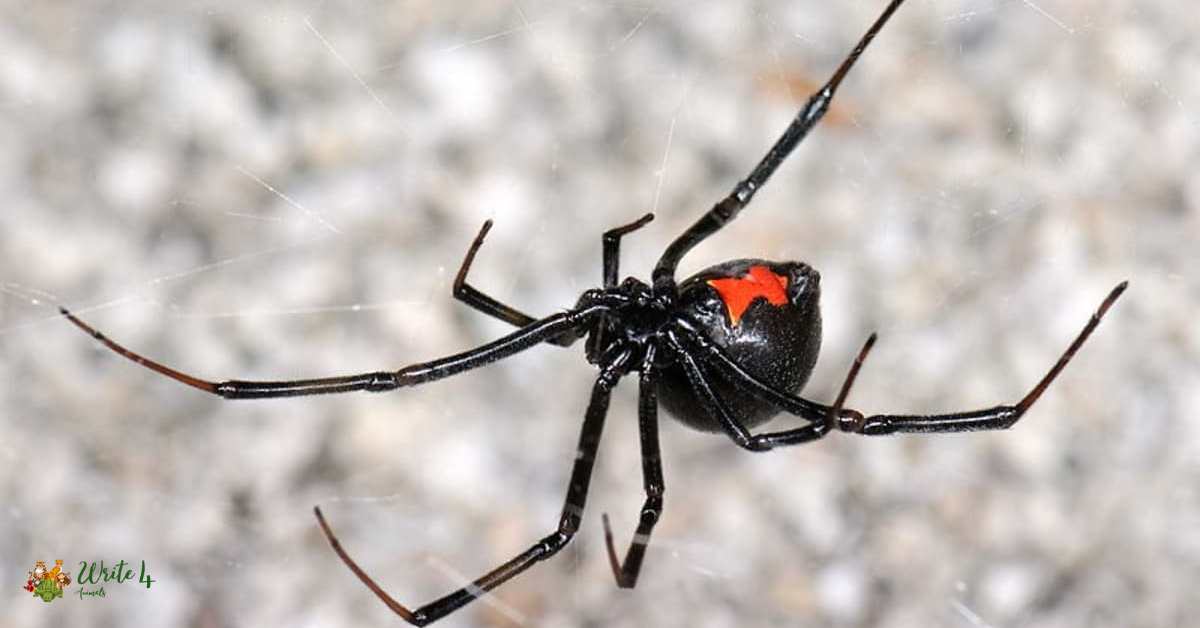
Found on nearly every continent, these arachnids are easily recognizable by their glossy black bodies adorned with a distinctive red hourglass shape on their abdomens. The term “black widow” alludes to the notorious mating behavior of certain species, where the female may consume the male after copulation.
Beyond their formidable reputation, black widow spiders play a vital role in pest control, preying on insects that might otherwise overrun human spaces. Despite the trepidation they evoke, these spiders remind us of the intricate beauty and ecological importance woven into the very fabric of our surroundings.
6. Black Serval
In the sprawling grasslands of Africa, the serval, a medium-sized wild cat, captivates with its distinctive coat. While servals typically exhibit black spots on a golden background, some individuals showcase melanism, resulting in a stunning all-black appearance.
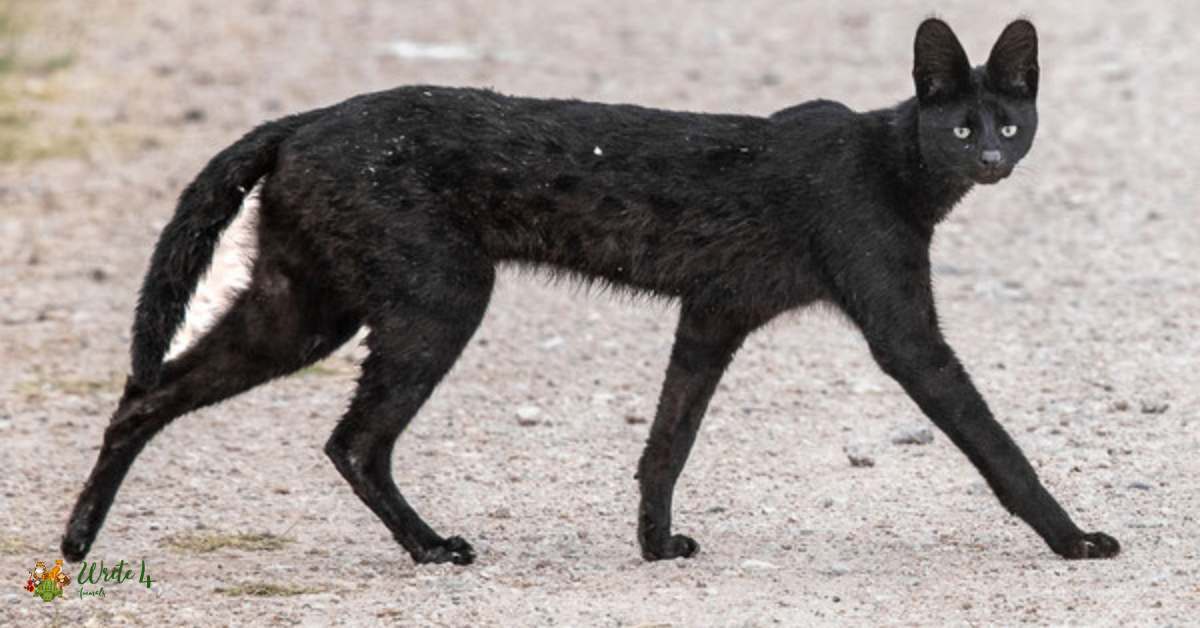
These elusive creatures navigate the tall grasses with unmatched agility, epitomizing the adaptability and grace of the feline family. The black serval, with its sleek silhouette against the African landscape, is a testament to the rich biodiversity of the continent.
As habitat loss and human encroachment threaten their existence, the black serval becomes not only a symbol of natural beauty but also a reminder of the delicate balance required to preserve the diverse tapestry of life on our planet.
7. Black Stallion
Galvanizing the human spirit for centuries, the Black Stallion stands as a living testament to the enduring bond between humans and horses. Revered for its beauty, strength, and untamed spirit, the black stallion has graced literature, art, and the annals of history.
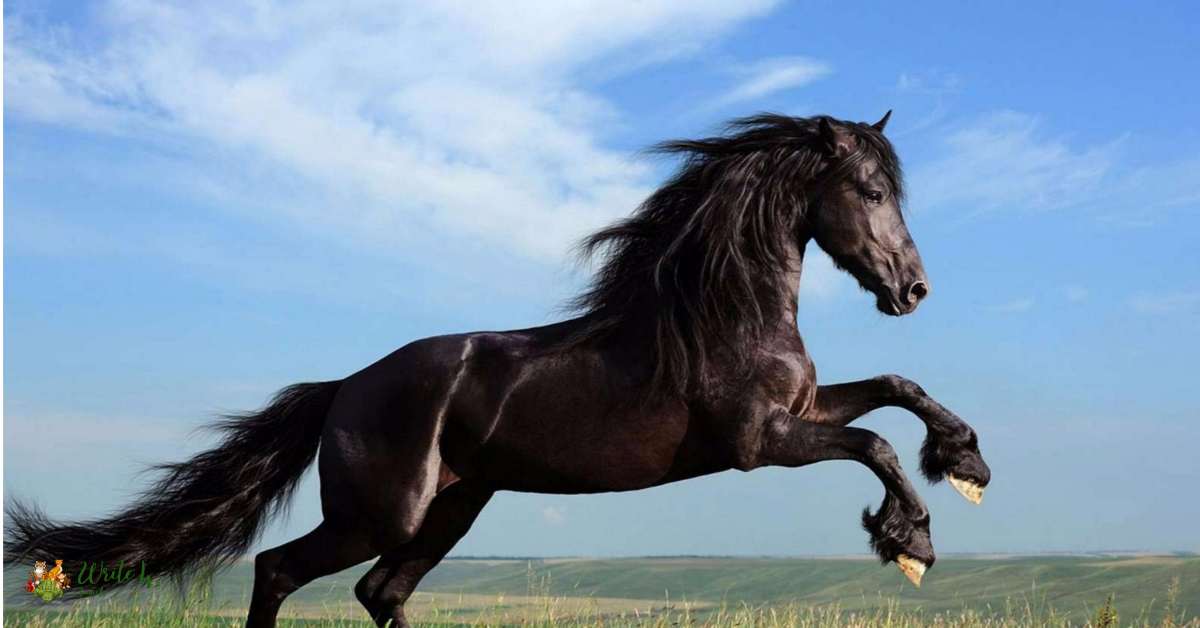
Beyond its aesthetic appeal, these majestic horses have been companions in exploration, agriculture, and even warfare. The glossy, ebony coat of the black stallion symbolizes more than mere aesthetics; it embodies the symbiotic relationship between human and horse, where trust and cooperation intertwine with the raw power and elegance of these magnificent creatures.
Whether thundering across open fields or standing as a symbol of freedom, this black animal continues to inspire awe and admiration, transcending time and cultural boundaries.
8. Black Bear
Roaming through the diverse landscapes of North America, the Black Bear is a symbol of both wilderness and adaptability. Despite their name, these bears can exhibit a range of colors, from cinnamon to blonde, with the black coloration being the most prevalent.
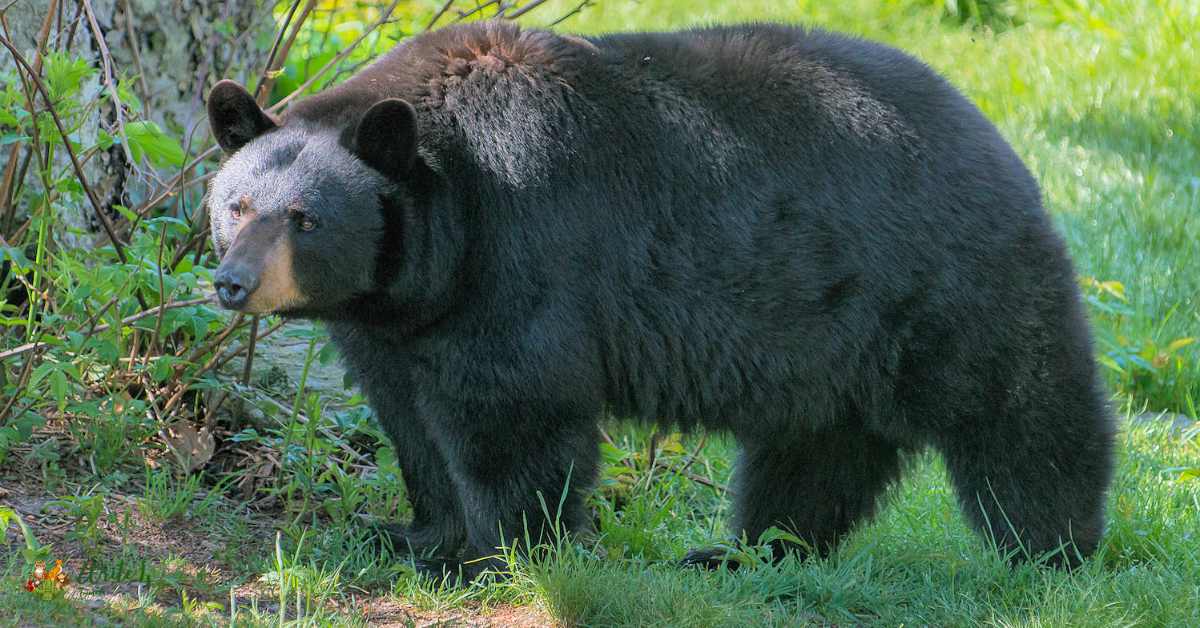
Their glossy black fur contributes to their iconic appearance and serves as a camouflage in the dense forests they call home. Black bears play a crucial role in maintaining healthy ecosystems by regulating herbivore populations and dispersing seeds.
However, they face increasing challenges from habitat loss and human-wildlife conflicts. As guardians of the wild, black bears remind us of the delicate balance required to ensure their survival and the preservation of the ecosystems they inhabit.
9. Black Swallowtail Butterfly
Fluttering through North American gardens and meadows, the Black Swallowtail Butterfly is a captivating winged wonder that stands out with its intricate black wings adorned with delicate patterns.
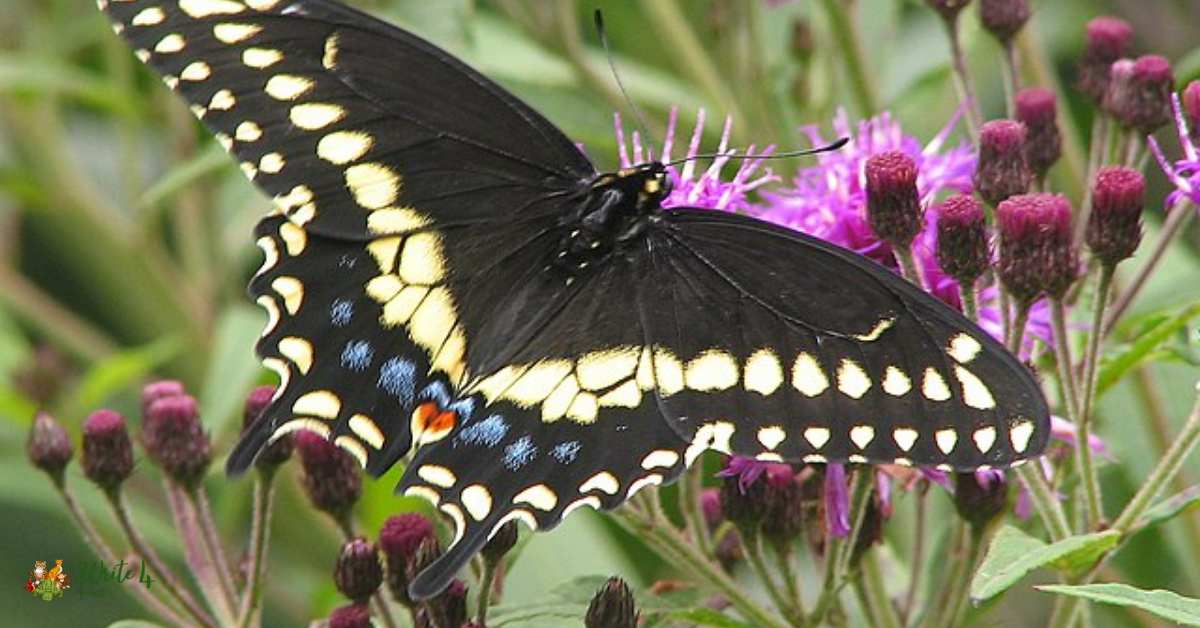
As one of the most recognizable butterfly species in the region, the black swallowtail undergoes a striking transformation from caterpillar to pupa to its final form, a testament to the wonders of metamorphosis. With its graceful flight and vibrant presence, this butterfly contributes to the biodiversity of its habitats, playing a role in pollination and serving as a visual spectacle for nature enthusiasts.
The black swallowtail, with its ephemeral beauty, serves as a reminder of the delicate interconnectedness of life and the importance of preserving the habitats that sustain these winged ambassadors of nature.
10. Black Panther Chameleon
Embarking on a journey to the vibrant rainforests of Madagascar, the Black Panther Chameleon emerges as a captivating reptilian wonder. While not a big cat like its namesake, this species of chameleon showcases a remarkable ability to change its color, adopting various shades of black, green, and turquoise.
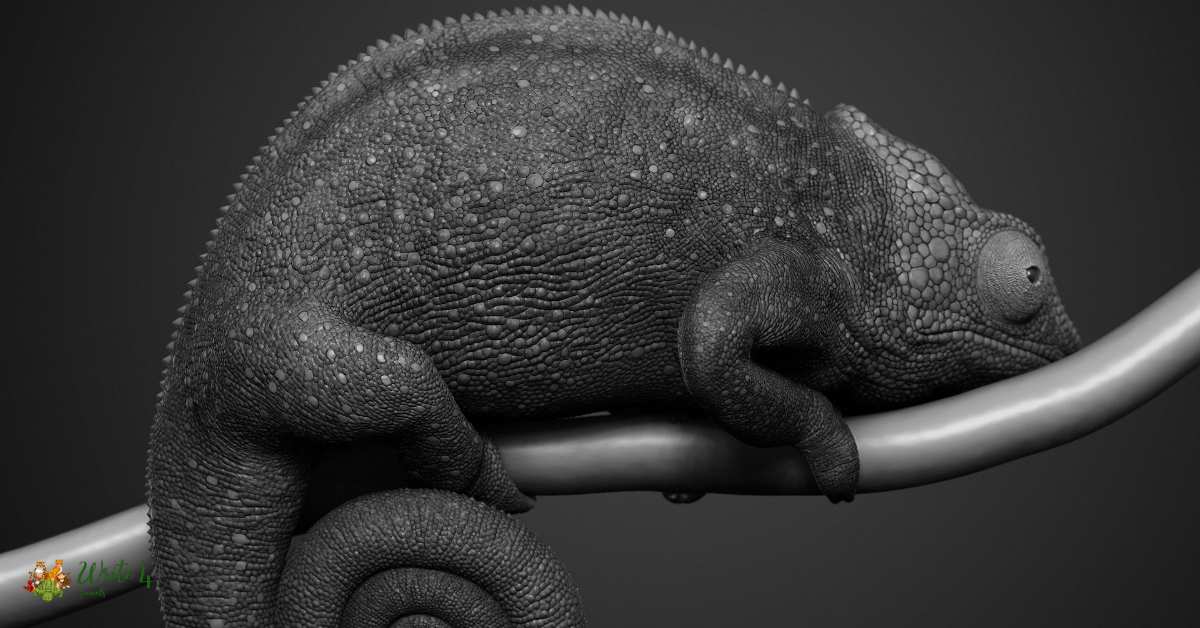
The male Panther Chameleon, in particular, exhibits a striking jet-black coloration during mating displays. With independently moving eyes, a prehensile tail, and a specialized tongue for hunting, these chameleons epitomize nature’s artistry in adaptation. Unfortunately, habitat destruction and the pet trade pose threats to their existence, underscoring the importance of conservation efforts.
The Black Panther Chameleon, with its kaleidoscopic hues and elusive charm, serves as a testament to the diversity of life on the island of Madagascar.
11. Black Cockatoo
Perched high in the eucalyptus forests of Australia, the Black Cockatoo presents a striking silhouette against the vibrant greenery. With its glossy black plumage and distinctive crest, these avian wonders are not only visually captivating but also integral to the ecological tapestry of their habitats.
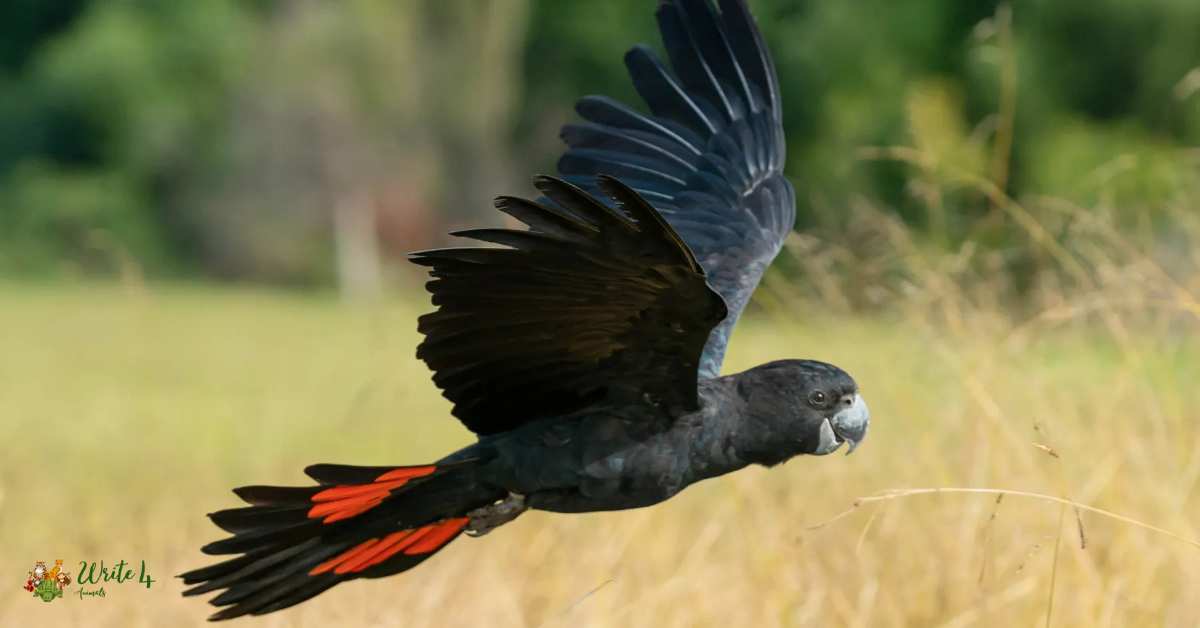
The black cockatoo species, comprising several subspecies, showcases diversity within its ebony-hued ranks, each possessing unique adaptations and vocalizations. Sadly, these iconic birds face threats from habitat loss and changes in their environment, underscoring the need for conservation efforts to secure their future.
The haunting calls of the black cockatoo echo through the Australian bush, a poignant reminder of the delicate balance between the preservation of biodiversity and the encroachment of human activities.
12. Black Rat Snake
Slithering silently through the woodlands of North America, the Black Rat Snake is a non-venomous serpent known for its adaptability and essential role in controlling rodent populations. Featuring a glossy black exterior and a robust physique, these snakes are skilled climbers, often found navigating trees and shrubs in search of prey.
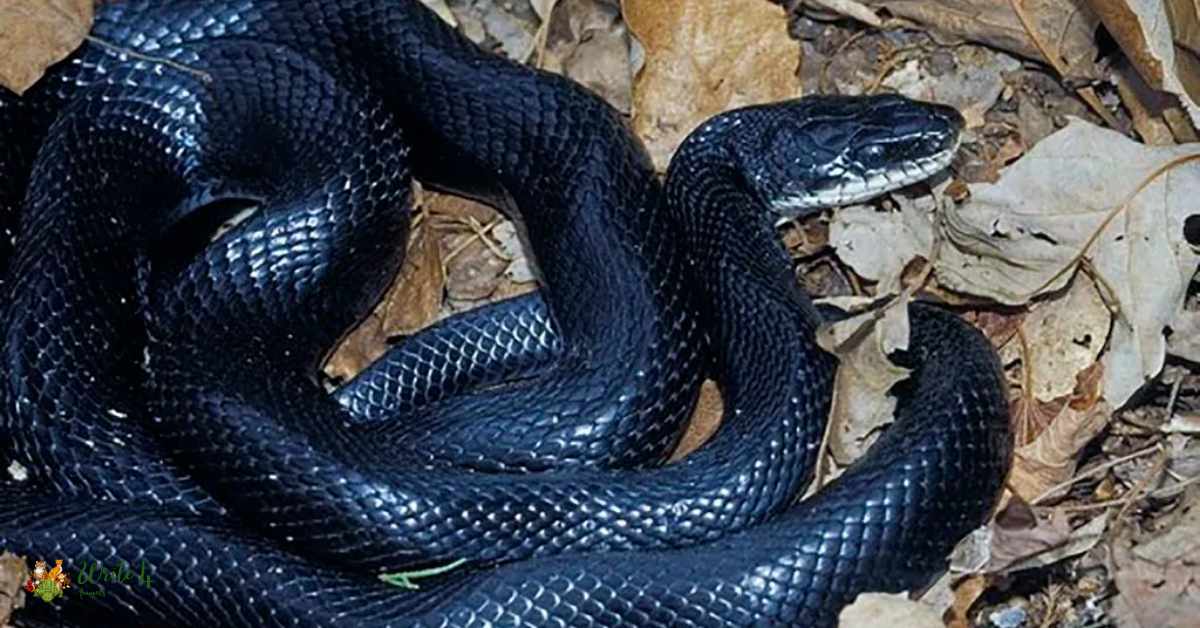
Despite their name, black rat snakes do not exclusively consume rodents, showcasing the ecological intricacies of their dietary habits. Unfortunately, these beneficial reptiles face challenges from habitat loss and misconceptions leading to unnecessary persecution.
The black rat snake, with its enigmatic presence, serves as a symbol of the delicate harmony between predator and prey, highlighting the importance of coexistence in nature.
13. Black Capuchin Monkey
Swinging through the verdant rainforests of South America, the Black Capuchin Monkey, with its glossy black coat, captivates observers with its agile antics. These intelligent primates exhibit complex social structures and tool usage, showcasing a remarkable adaptability to their lush habitats.

The black capuchin, also known as the black-horned capuchin, plays a crucial role in seed dispersal, contributing to the regeneration of the diverse plant life in their ecosystems. Despite their resilience, these monkeys face threats from deforestation and the exotic pet trade, highlighting the urgent need for conservation measures.
The black capuchin stands as a symbol of the intricate connections within the web of life, reminding us of the responsibility we bear in preserving the biodiversity of our planet.
14. Black Grouse
In the vast landscapes of Eurasia, the Black Grouse emerges as a charismatic bird with a glossy black plumage that comes to life during the mating season. The male black grouse, adorned with a distinctive lyre-shaped tail and a red wattle above each eye, engages in elaborate courtship displays.
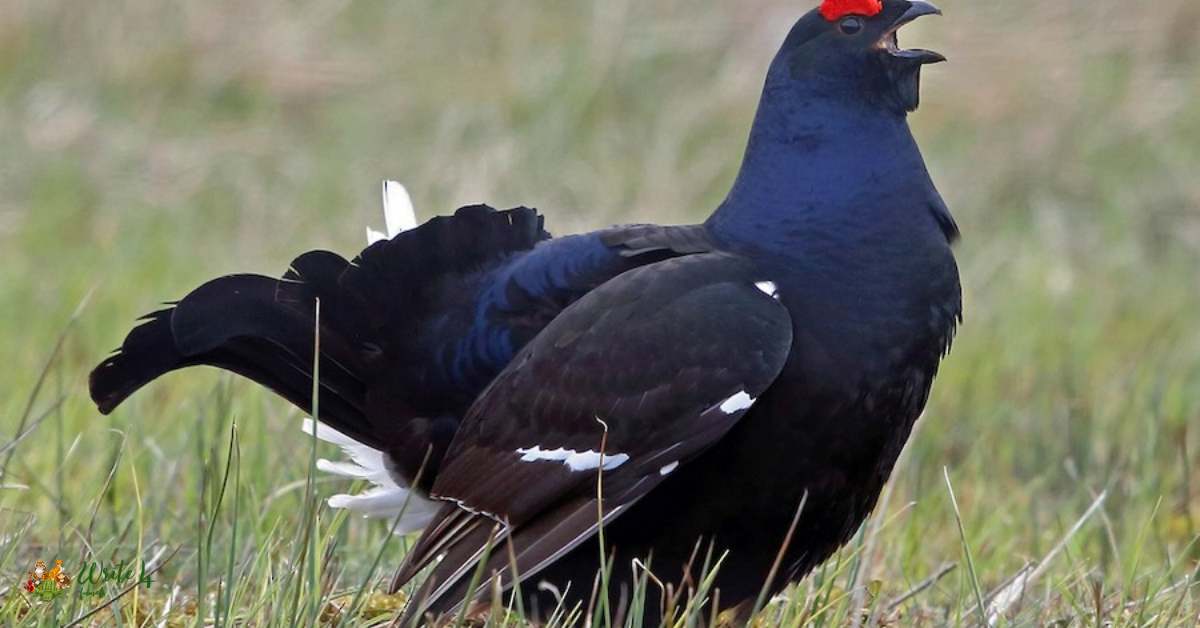
These displays, set against the backdrop of their moorland habitats, are a spectacle of nature’s beauty and the competitive nature of breeding rituals. Despite their striking appearance, black grouse populations face challenges from habitat loss and changes in land use.
The black grouse’s intricate mating rituals and vibrant plumage remind us of the intricate dance of life, encouraging us to appreciate and preserve the delicate balance of ecosystems.
15. Black Diamond Stingray
In the freshwater habitats of South America, the Black Diamond Stingray glides gracefully beneath the surface, its velvety black skin adorned with white speckles resembling diamonds. Found in river systems, these unique stingrays are highly adapted to their aquatic environments, showcasing a mesmerizing blend of elegance and mystery.
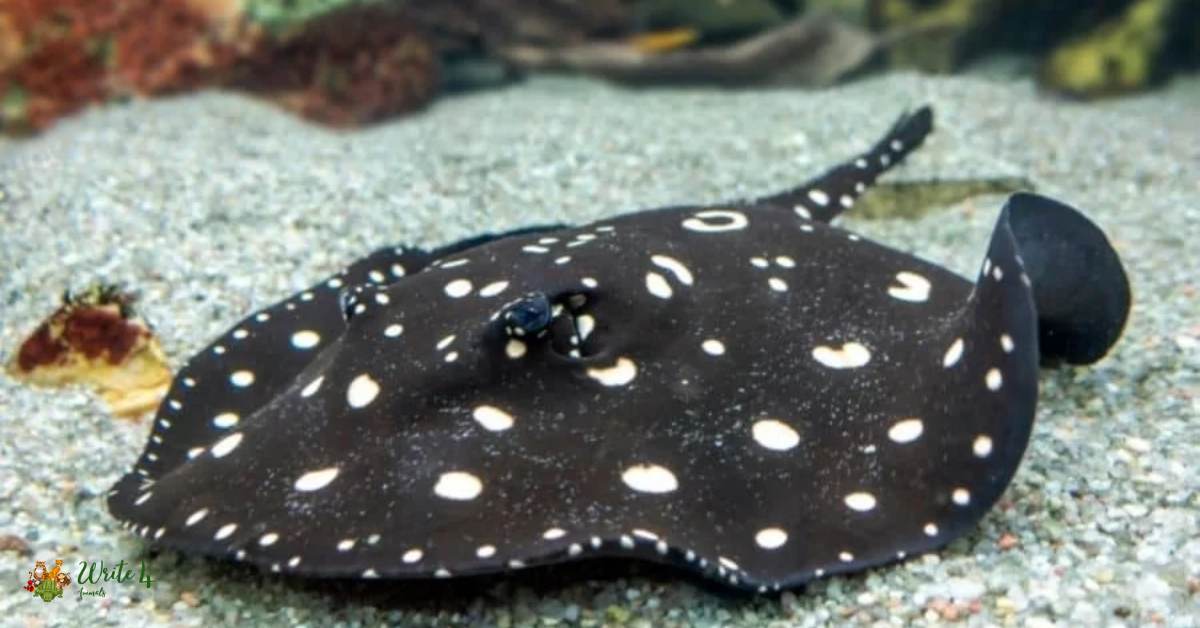
The black diamond stingray’s striking appearance has made it a sought-after species in the aquarium trade, leading to conservation concerns. With a flattened body and distinctive diamond-shaped markings, these stingrays symbolize the intricate beauty hidden beneath the water’s surface.
Conservation efforts are crucial to ensuring the survival of these enigmatic creatures and preserving the delicate ecosystems they inhabit. The black diamond stingray, with its aquatic grace, serves as a reminder of the wonders that lie beneath the waves and the need for responsible stewardship of our planet’s aquatic treasures.
Frequently Asked Questions
Why are some animals black?
The black coloration in animals is often attributed to a phenomenon called melanism, where an excess of dark pigment melanin is produced. Melanism provides several advantages, including better camouflage, increased absorption of sunlight for warmth, and protection from harmful UV radiation.
Are black animals more prone to overheating in warm climates?
While black animals may absorb more sunlight and heat, they have evolved various strategies to cope with temperature regulation. Some engage in behaviors like seeking shade or being more active during cooler periods, while others have physiological adaptations to dissipate heat effectively.
What is the significance of black coloration in the animal kingdom?
Black coloration serves different purposes across species. It can be a form of camouflage, a signal for mating rituals, a deterrent for predators, or a means of regulating body temperature. The significance varies depending on the animal’s habitat, behavior, and evolutionary adaptations.
Are black animals more vulnerable to predators due to their visibility?
While the visibility of black animals depends on their environment, it’s essential to note that many black species have evolved effective strategies for survival. In some cases, the dark coloration acts as camouflage in dense forests or at night, and in others, it serves as a warning to potential predators.
Are there any superstitions or cultural beliefs associated with black animals?
Throughout history, various cultures have attached symbolism to black animals. While some see them as omens or symbols of mystery, others view them positively, associating black with strength, resilience, and adaptability. Superstitions and beliefs about black animals often vary widely.
Can black animals change color over time?
In most cases, the coloration of animals, including black animals, is determined by genetics and doesn’t change over time. However, certain factors like age, diet, or environmental conditions may influence the intensity or shade of the black color.
How do black animals adapt to their environments?
Black animals have evolved various adaptations to thrive in their environments. This includes behavioral adaptations such as hunting during specific times, seeking appropriate habitats, and physiological adaptations like efficient heat regulation mechanisms to cope with their dark coloration.
Are there conservation concerns for black animals?
Yes, some black animal species face conservation challenges. Habitat loss, climate change, poaching, and human-wildlife conflicts are threats that impact various black species. Conservation efforts are crucial to preserving these animals and maintaining the ecological balance in their respective habitats.
Recommended
1. Pocket bully: Dog Breed Size and lifespan
2. 10 Most Prettiest Snake in the world | beautiful snake
